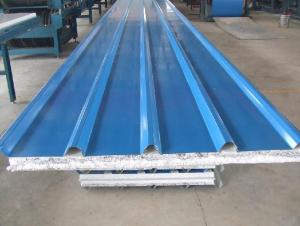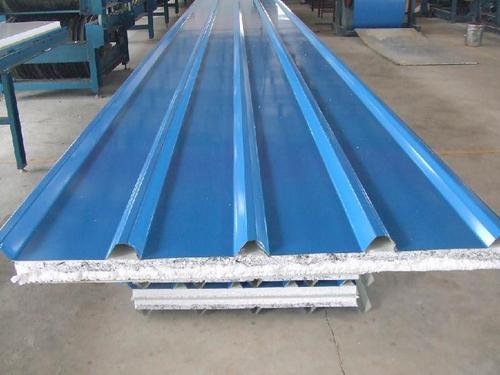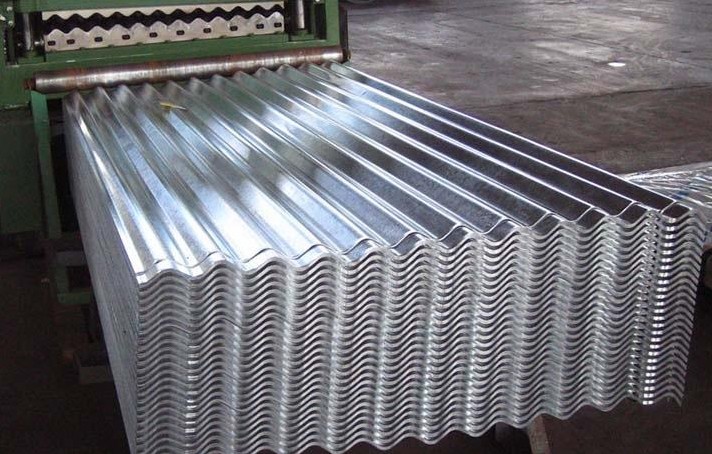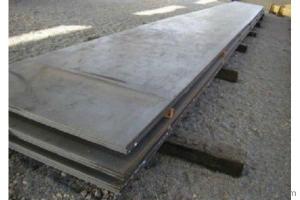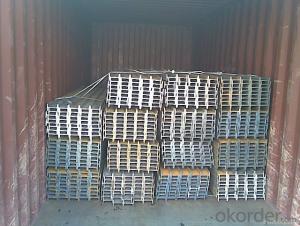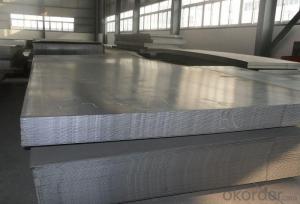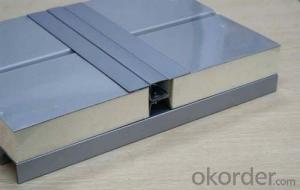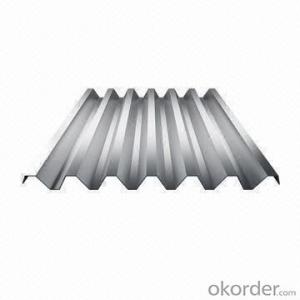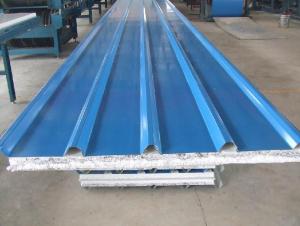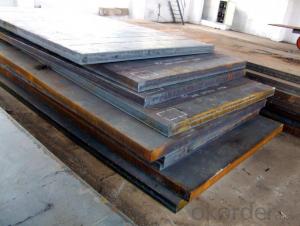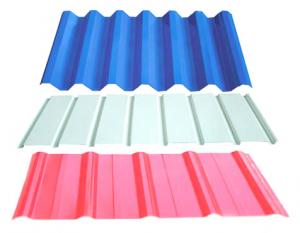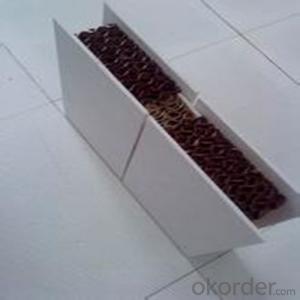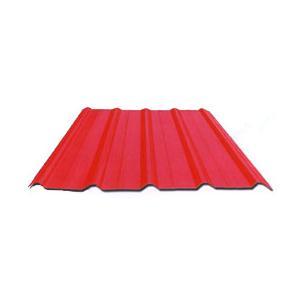Corrugated steel sheets for roofing
- Loading Port:
- China Main Port
- Payment Terms:
- TT OR LC
- Min Order Qty:
- -
- Supply Capability:
- -
OKorder Service Pledge
OKorder Financial Service
You Might Also Like
Commodity | Hot dip galvanized steel coil and sheet |
Technical Standard: | JIS 3302 / ASTM A653 / EN10143 |
Grade | DX51D / DX52D/ DX53D/ S250,280,320GD |
Types: | Commercial / Drawing / Deep Drawing / Structural quality |
Width | 500/650/726/820/9/1000/1200/1219/1220/1250mm |
Thickness | 0.12-2.8mm |
Type of coating: | Galvanized |
Zinc coating | Z30-275g/m2 |
Surface Treatment | Chromed / Skin-pass/ Oiled/Slightly Oiled/ Dry/ Anti-fingerprint |
Surface structure: | Zero spangle / minimized spangle / regular spangle/ big spangle |
ID coil | 508mm or 610mm |
Coil weight | 3-8 MT per coil |
Package: | Properly packed for ocean freight exportation in 20''containers |
Application: | Industrial panels, roofing and siding for painting |
Price terms | FOB,CFR,CIF |
Payment terms | T/T or L/C |
Delivery time | Within 30 days |
Remarks | Insurance is all risks |
MTC will be handed on with shipping documents | |
We accept the third party certification test,such as SGS/BV |
Technical data :
Hot dipped galvanized coil Technical Data
Chemical Composition | ||||||
GRADE | C | Si | Mn | P | S | Ti |
SGCC/DX51D+Z | ≤0.10 | ≤0.50 | ≤0.60 | ≤0.10 | ≤0.030 | ≤0.020 |
DX52D+Z | ≤0.10 | ≤0.50 | ≤0.60 | ≤0.10 | ≤0.030 | ≤0.020 |
SGCD/DX53D+Z | ≤0.10 | ≤0.30 | ≤0.50 | ≤0.05 | ≤0.030 | ≤0.020 |
SGCE/DX54D+Z | ≤0.10 | ≤0.30 | ≤0.30 | ≤0.03 | ≤0.020 | ≤0.020 |
DX56D+Z | ≤0.10 | ≤0.30 | ≤0.30 | ≤0.03 | ≤0.020 | ≤0.020 |
Structural | ≤0.20 | ≤0.60 | ≤1.70 | ≤0.10 | ≤0.045 | |
|
|
|
|
|
| |
Hot dipped galvanized steel coil Mechanical Properties | |||
GRADE | Yield Strength MPa | Tensile Strength MPa | Elongation % |
SGCC(DX51D+Z) | ≥205 | ≥270 | - |
SGCD(DX53D+Z) | - | ≥270 | 38 |
SGCE(DX54D+Z) | - | ≥270 | 40 |
DX56D+Z | - | ≥270 | 42 |
- Q: Can steel sheets be used for transportation equipment?
- Yes, steel sheets can be used for transportation equipment. Steel is commonly used in the automotive industry for manufacturing various components such as body panels, frames, chassis, and other structural parts due to its high strength, durability, and impact resistance. It is also utilized in the production of trains, ships, and aircraft, making it a versatile material for transportation equipment.
- Q: What are the different shapes available for steel sheets?
- There are various shapes available for steel sheets, including but not limited to flat sheets, coils, strips, plates, and perforated sheets.
- Q: Are the steel sheets suitable for architectural cladding?
- Steel sheets are indeed appropriate for architectural cladding. Steel, being a sturdy and long-lasting substance, offers outstanding defense against weather conditions and external influences. It is easily malleable and can be crafted into diverse shapes, making it extremely adaptable for architectural purposes. Moreover, steel cladding provides a contemporary and polished appearance, permitting the creation of visually captivating building exteriors. Additionally, steel sheets can be coated or painted to augment their ability to resist corrosion and to further personalize their look. All in all, due to their strength, durability, versatility, and aesthetic allure, steel sheets are widely favored for architectural cladding.
- Q: What is the tensile strength of the steel sheets?
- The tensile strength of steel sheets can vary depending on the specific grade and thickness of the steel. Generally, steel sheets have a tensile strength ranging from 370 to 1,500 megapascals (MPa). However, it is important to note that different types of steel sheets have different tensile strength values. For example, low carbon steel sheets typically have a tensile strength of around 370 to 550 MPa, while high-strength low alloy (HSLA) steel sheets can have tensile strengths ranging from 450 to 1,200 MPa. Additionally, the thickness of the steel sheets can also affect their tensile strength, with thicker sheets generally having higher tensile strength values. Therefore, it is crucial to consult the specifications provided by the manufacturer or supplier of the steel sheets to determine the precise tensile strength for a particular grade and thickness.
- Q: Can steel sheets be used in oil and gas applications?
- Yes, steel sheets can be used in oil and gas applications. Steel is a commonly used material in the industry due to its high strength, durability, and resistance to corrosion. It is frequently used in the construction of pipelines, storage tanks, and other equipment for the oil and gas sector.
- Q: How do steel sheets compare to wood sheets?
- Steel sheets and wood sheets differ significantly in terms of strength, durability, and usage. To begin with, steel sheets are renowned for their remarkable strength and durability. They can endure heavy loads, extreme weather conditions, and possess high resistance to warping, rotting, and insect damage. Conversely, wood sheets are less sturdy and may succumb to moisture, termites, and decay if not adequately treated or maintained. Regarding versatility, steel sheets offer a wide array of applications. Their high tensile strength and structural stability make them commonly utilized in the construction, automotive, and manufacturing industries. Conversely, wood sheets are commonly employed in interior design, furniture production, and smaller-scale construction projects due to their natural aesthetic appeal and ease of manipulation. Furthermore, steel sheets are fire-resistant, making them a safer option compared to wood sheets, which are combustible and can contribute to the spread of fire. Steel sheets also boast a longer lifespan, necessitating less maintenance and replacement compared to wood sheets, which may require regular refinishing, sealing, or replacement due to wear and tear. Nevertheless, wood sheets possess their own advantages. They are generally more cost-effective than steel sheets, making them a popular choice for projects with budget constraints. Additionally, wood sheets have superior insulation properties, providing natural warmth and soundproofing qualities. Ultimately, the selection between steel sheets and wood sheets hinges on the specific project requirements, encompassing factors such as budget, desired aesthetics, structural needs, and environmental considerations.
- Q: How do steel sheets perform in magnetic properties?
- Steel sheets have low magnetic permeability, which means they are not strongly attracted to magnets and do not retain magnetism after being magnetized.
- Q: Can steel sheets be customized in terms of size and thickness?
- Yes, steel sheets can be customized in terms of size and thickness according to the specific requirements and needs of the customer or project.
- Q: What is the average wind load capacity of steel sheets?
- The wind load capacity of steel sheets can differ depending on a range of factors, including sheet thickness, steel type, and the specific design and installation of the structure. However, steel sheets are renowned for their robustness and endurance, enabling them to withstand substantial wind loads. When it comes to roofing or cladding applications, steel sheets are typically engineered to meet precise wind load demands in accordance with regional building codes and standards. These standards take into consideration factors such as geographical location, building height, exposure category, and wind speed. Engineers and architects rely on calculations and simulations to determine the wind load capacity of steel sheets and analyze the forces exerted by the wind on the structure. They take various factors into account, including wind pressure, building orientation, surface area, and the shape and profile of the steel sheets. In conclusion, the average wind load capacity of steel sheets cannot be generalized due to the influence of numerous factors. It is essential to seek guidance from a structural engineer or building professional to establish the appropriate wind load capacity requirements for a specific steel sheet application.
- Q: What are the different packaging options available for steel sheets?
- There are several packaging options available for steel sheets, including wooden crates, pallets, coils, and bundles. Wooden crates provide sturdy protection and are commonly used for transporting large steel sheets. Pallets are commonly used for smaller steel sheets and can be easily loaded and unloaded using a forklift. Coils are another option, where the steel sheet is wound into a coil shape for easier handling and transportation. Bundles involve securing multiple steel sheets together using metal bands or straps, providing a compact and secure packaging solution.
Send your message to us
Corrugated steel sheets for roofing
- Loading Port:
- China Main Port
- Payment Terms:
- TT OR LC
- Min Order Qty:
- -
- Supply Capability:
- -
OKorder Service Pledge
OKorder Financial Service
Similar products
Hot products
Hot Searches
Related keywords
